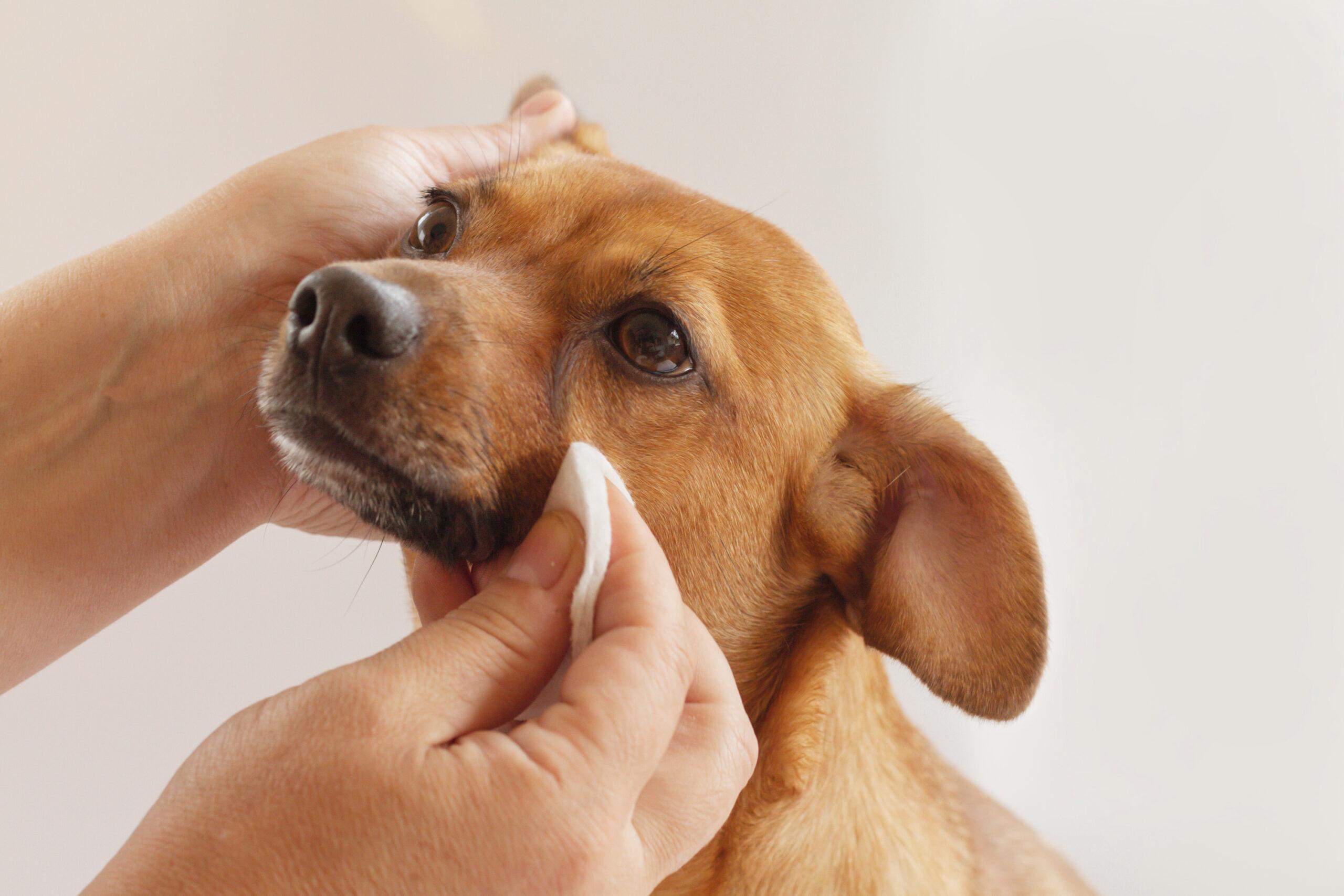If you’re a pet parent you’ve probably noticed some liquid substance around your dog’s eyes. Dog eye discharge is a normal occurrence for your canine friends. There can be any number of reasons for this, some to be concerned about and some not.
In most cases, a dog’s tear ducts produce tears to prevent dryness of the eye and protect it from foreign bodies like dust, eyelashes, etc. It lubricates the eyes and clears any debris that might have entered the area.
While any veteran dog parent would know that this is nothing to worry about, there are instances when eye discharge could be a sign of some other serious conditions. During such cases, it is critical to get your dog the necessary treatment as soon as possible.
Dog Eye Discharge: How to Deal with It?
If you’re worried that your dog’s eye discharge is a cause for concern, fret not. We’ve compiled the ultimate list of dog eye problems and their symptoms, so you know what to look out for. Listed below are different types of discharges and what they mean. Continue reading to find out more!
1. Green/Yellow discharge
Yellow green discharge from the eyes is a sign of conjunctivitis. Conjunctivitis is a fairly common dog eye infection that affects the tissue in the eye area causing it to become inflamed. Conjunctivitis, also known as Pink Eye, is classified into two types: infectious conjunctivitis and non-infectious conjunctivitis.
Infectious conjunctivitis is caused by a bacterial infection and it can be contagious. Whereas non-infectious conjunctivitis is a result of allergies, foreign bodies entering the eye, tumors, trauma, and injury. Besides a yellow-green discharge, other symptoms of conjunctivitis include:
- Excessive blinking
- Pawing at the eye
- Swelling or puffiness around the eye
- Pinkness/redness of the eyes
- Squinting
Treatment for conjunctivitis differs according to the cause of the infection. Once it is identified treatment options can vary from saline washes, antihistamines, antibiotics, or even surgery.
2. Reddish Brown
If you’ve noticed a reddish brown discoloration in the inner corner of your dog’s eyes then there’s a good chance your dog could have epiphora. Epiphora is a condition where a dog experiences excessive tearing as a result of insufficient drainage of tears from the eyes. This can either be due to deformity or due to blockage.
The red color is a result of a compound called porphyrin which upon contact with air turns red. Epiphora is often accompanied by an odor, skin irritation, and dampness below the eye. Epiphora in itself is not harmful to your furry friends, however, if the symptoms escalate it’s a good idea to get your canine diagnosed by the vet.
3. Watery Eyes
Watery eyes can be the result of a wide range of reasons. Most ocular infections and diseases often have watery eyes as symptoms. A few of the more common reasons for teary eyes include allergies, the presence of foreign bodies in the eye, anatomical deformities, corneal ulcers, glaucoma, and injury. Some of these are harmless and not a cause for concern while others require immediate medical attention.
Along with watery eyes if you notice the dog’s eye swollen, it could be that there might be a more serious problem with your dog. It’s always best to take your dog to the vet if you notice your dog’s eyes watering excessively.
Treatment: Keeping the area clean is paramount if you notice extreme dampness around the eye. Also, seek medical attention as soon as possible to ensure everything is okay with your canine.
3. Mucus in Eyes
Mucus in the eyes is an indicator of a condition known as keratoconjunctivitis sicca (KCS) or dry eye as it is more commonly known. Dry eye occurs when the dog’s tear glands are unable to produce tears necessary for the tear film. This condition is a cause for concern because when left untreated it can cause inflammation in the eye, infection, and ulcers.
Certain breeds of dogs like Pugs, Pekingese, Shih Tzus, and Boston Terriers are more at risk for developing dry eye due to anatomical deformities. Dogs suffering from this condition also experience excessive blinking and squinting. It is also accompanied by red eyes and a mucus-like discharge from the eyes.
Treatment: For dogs suffering from dry eye, it is necessary to keep the eye lubricated. Vets will prescribe lubricating agents like artificial tears to keep the eyes hydrated. While there is no cure for dry eye it can be managed as long as you stick to the treatment regime prescribed by the doctor.
Final Thoughts
A dog’s eye discharge is their natural mechanism of alerting you that there is something wrong with them. Dog owners who have canines who are predisposed to these issues must be extra vigilant and keep an eye out for any symptoms that may appear. Keeping yourself informed prepares you as to what you can expect should you notice any of the above-mentioned discharges.
Remember dog eye boogers are fairly common. They are mainly an accumulation of debris, oils, and other gunk. But sometimes that might not be the case. So it is paramount that you take your dog to the vet as soon as you see the symptoms. And dog eye discharge can be painful, your furry friend will probably experience a lot of discomfort. So above all make sure to give your dog plenty of love, attention, and care.






